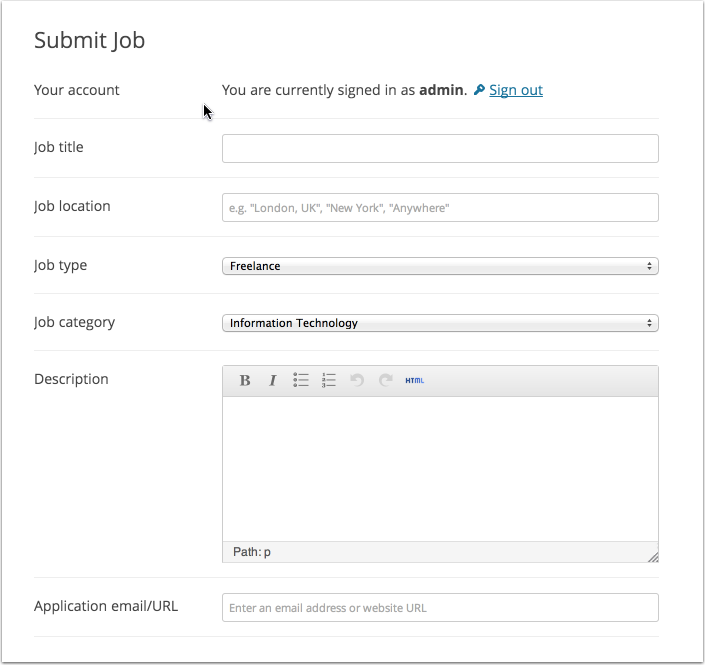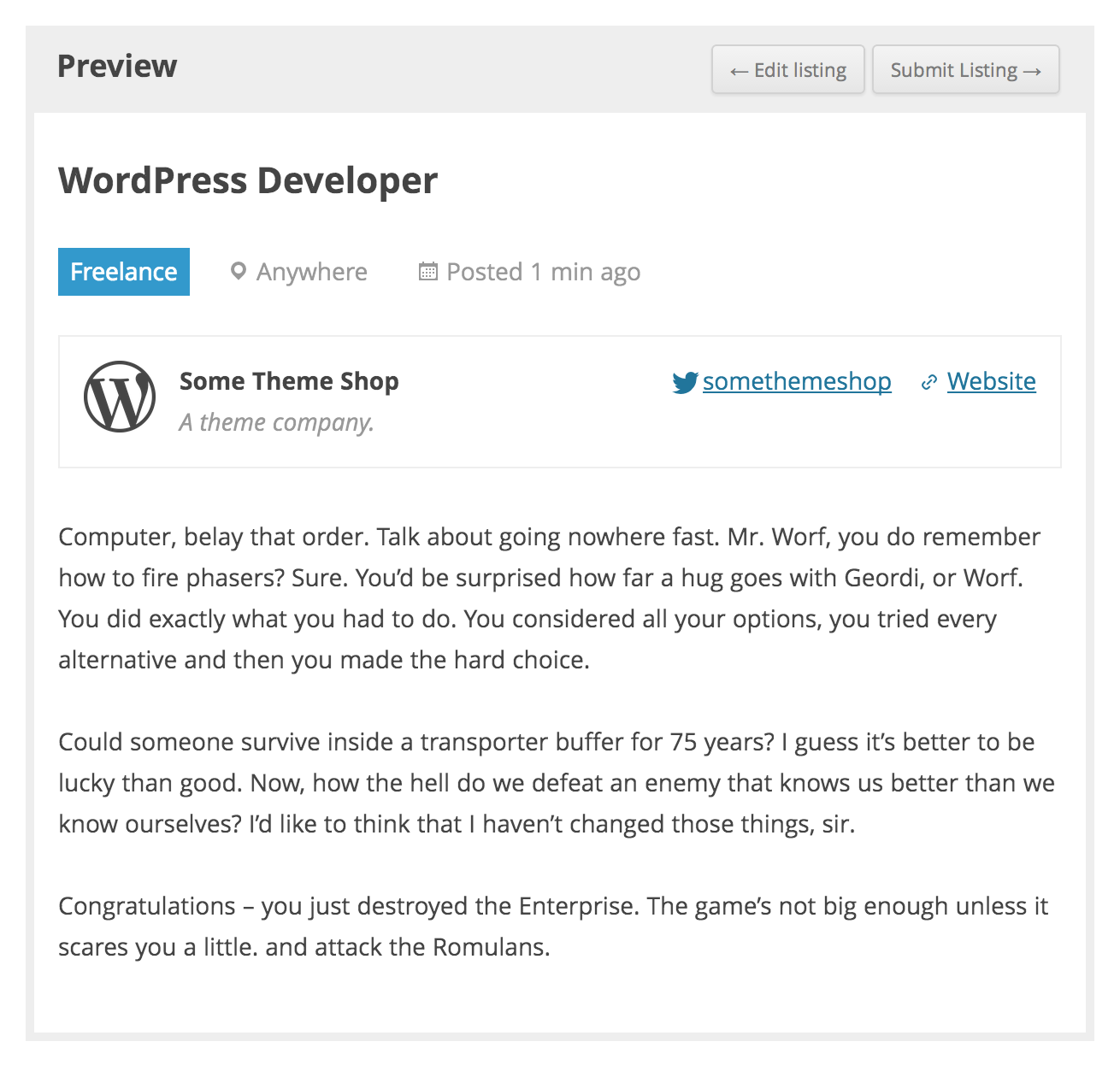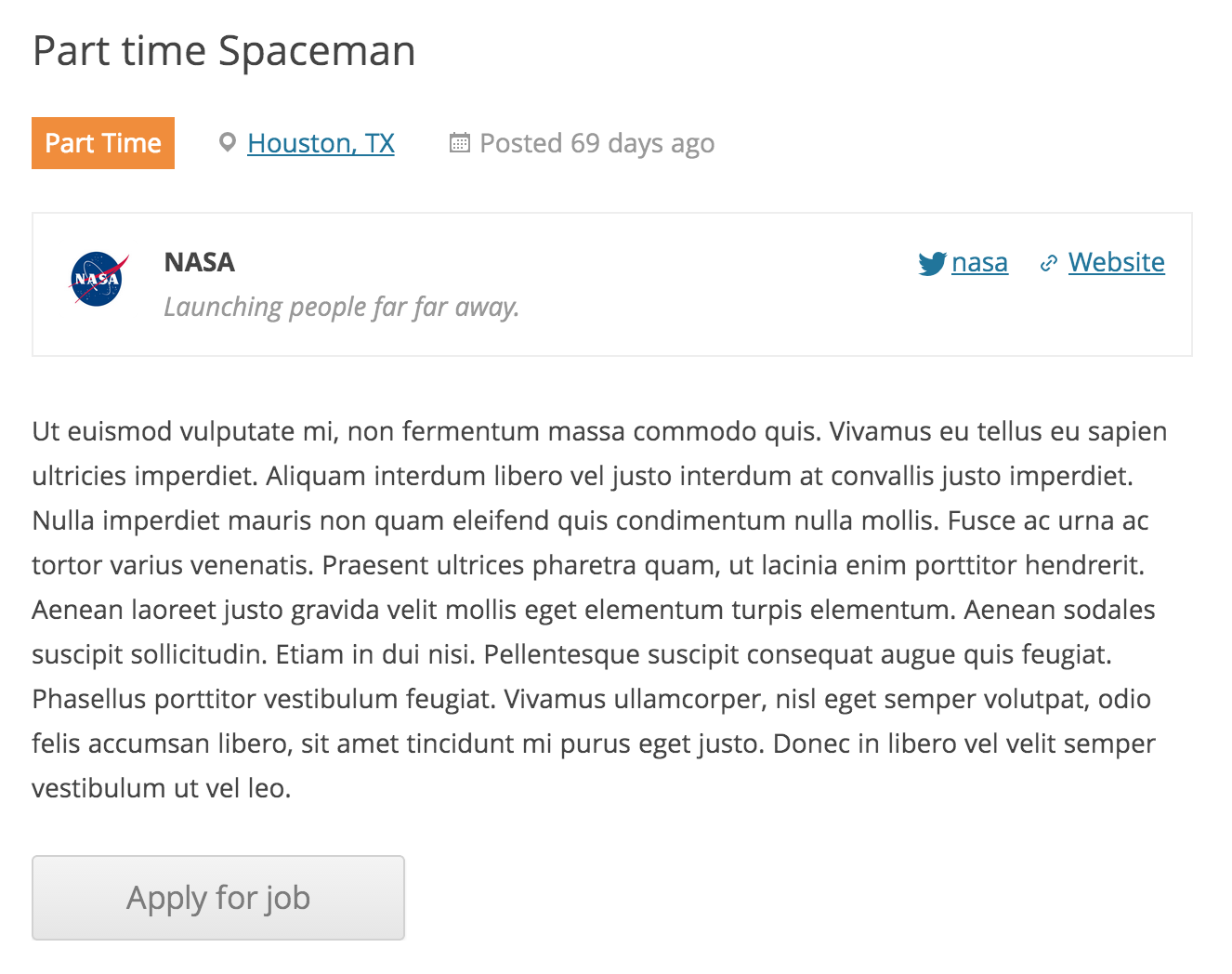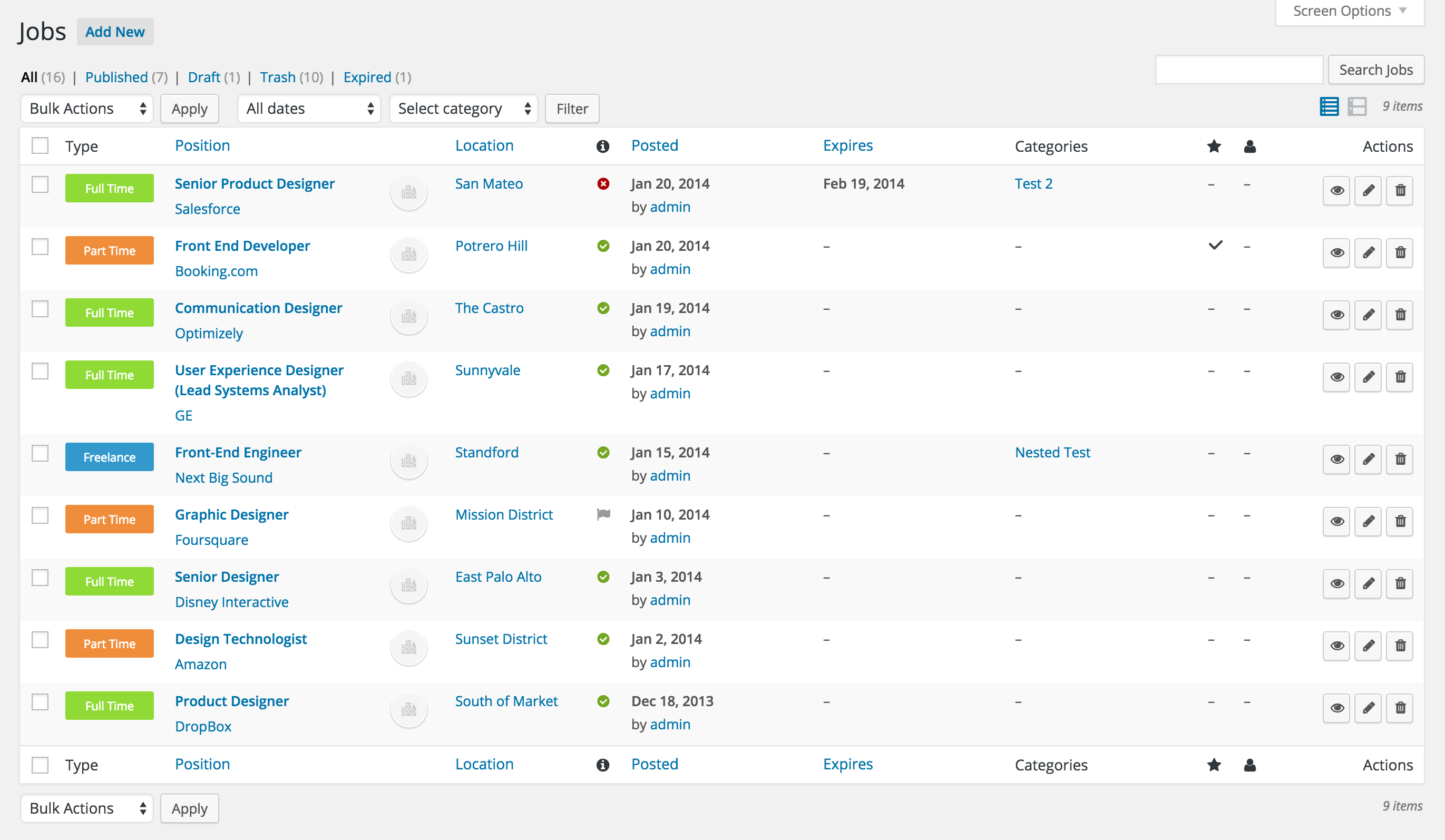Installation:
- Download and install the plugin
- Go to dashboard > job listings > start adding listings and creating job types
- Use the
[jobs] shortcode/custom widgets to place the search and listings on pages – make sure a few have been added before you do this otherwise nothing will show up
- Job listings are built with custom post types so you can use beaver themer to create a custom theme template for individual job listings
- You may need a Google Maps API key to configure the map portion on listings pages – this needs to be provided by the customer
Configuration:
Using Shortcodes
Once installed:
- Create a page called “jobs” and inside place the
[jobs] shortcode. This will list your jobs.
- Create a page called “submit job” and inside place the
[submit_job_form] shortcode if you want front-end submissions.
- Create a page called “job dashboard” and inside place the
[job_dashboard] shortcode for logged in users to manage their listings.
Note when using shortcodes, if the content looks blown up/spaced out/poorly styled, edit your page and above the visual editor click on the ‘text’ tab. Then remove any ‘pre’ or ‘code’ tags wrapping your shortcode. For more information, read the documentation shortcode reference.
Job Listings & Job Submission settings
The job listings tab contains the following settings:
- Listings per page – Controls how many job listings should be shown per page when using the [jobs] shortcode
- Filled positions – If checked, filled positions will no longer be visible when using the [jobs] shortcode
- Hide expired listings – If checked, expired job listings are not searchable.
- Hide Expired Listings Content – If checked, the content within expired listings will be hidden.
- Categories – If checked, job categories will be enabled. These are used to group jobs by category and are also visible on the frontend job submission form if enabled.
- Multi-select Categories – If enabled, the category select box will default to a multiselect on the [jobs] shortcode.
- Category Filter Type – Determines the logic used to display jobs when selecting multiple categories.
- Types – Choose whether you want to enable types.
- Multi-select Listing Types – If enabled, each job can have more than one type.
- Date Format – Choose how you want the published date for jobs to be displayed on the front-end.
- Google Maps API Key – Enter your Google Maps API key (you can acquire one here). Google requires an API key to retrieve location information for job listings.
The job submission tab shows options regarding the job submission process in WP Job Manager:
- Account required – If left unchecked, non-logged in users will be able to submit job listings without creating an account.
- Account creation – If checked, non-logged in users will be able to create an account by entering their email address on the job submission form. This is optional depending on the settings below.
- Account Username – If enabled, a username will be generated from the first part of the user email address. Otherwise, a username field will be shown.
- Account Password – When enabled, an email will be sent to the new user with their username and a link to set their password. If disabled, a password field will be shown and the new user’s email address won’t be verified.
- Account Role – If you enable registration on your job submission form, choose a role for the newly registered users. This defaults to Employer.
- Moderate New Listings – If enabled, new submissions will be inactive, pending admin approval. Only once approved by an admin (published) will they be visible on the frontend.
- Allow Pending Edits – If enabled, submissions awaiting admin approval can be edited by the user.
- Listing duration – How many days listings are live before expiring. Can be left blank to never expire. Published jobs will automatically be set to expire based on this setting. Please note that WC Paid Listings can override this setting.
- Application Method – Choose the contact method for listings.
Customizing job form fields
- Customizing fields in the default application form can’t really be done with the in scope plugin, there are a few add-ons that can be used by the customer later on – or the functions file can be edited – but these options don’t fall within our scope list.
- The job listing however, gives you the option to add an application link url – and you can easily make an application form in gravity, place it on a page, and put the page’s URL in this link field on the listing







